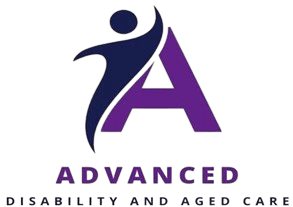Community participation plays a fundamental role in enhancing the quality of life for individuals with disabilities. It involves not only providing access to necessary resources and services but also fostering inclusion, empowerment, and social cohesion. When communities actively engage in supporting persons with disabilities, they help dismantle barriers related to stigma, accessibility, and social exclusion.
This article explores how community participation contributes to disability support, why it is vital, and how it can be strengthened through collective action and inclusive policies.
Promoting Inclusion and Equal Opportunities
One of the fundamental roles of community participation is to promote inclusion and equal opportunities for individuals with disabilities. When community members actively engage in awareness campaigns, inclusive education, and accessible infrastructure projects, they contribute to dismantling social and physical barriers. For example, community-led initiatives such as inclusive playgrounds or accessible public transport systems make everyday life more manageable for people with mobility challenges.
Moreover, inclusive communities encourage people with disabilities to participate in decision-making processes. This involvement ensures that their needs are understood and addressed accurately rather than assumed. Through public consultations, local councils can develop inclusive strategies that reflect lived experiences, fostering equality and mutual respect among all members of society.
Enhancing Social Integration
Social integration is another crucial outcome of community participation. People with disabilities often experience social isolation due to stereotypes or a lack of interaction opportunities. Community engagement helps eliminate these barriers by creating shared spaces where individuals can connect, learn, and collaborate. Activities like inclusive sports events, cultural festivals, or volunteer programmes allow people with and without disabilities to interact on equal terms.
This integration not only improves the emotional well-being of individuals with disabilities but also reshapes community attitudes. When the wider society observes the capabilities and contributions of disabled persons, it reduces prejudice and promotes acceptance. The result is a stronger, more cohesive community that values diversity as a source of strength rather than division.
Empowering Individuals through Participation
Empowerment is central to the philosophy of disability support. When individuals with disabilities are actively involved in community initiatives, they gain confidence, develop new skills, and assert control over their lives. Community-based rehabilitation (CBR) programmes, supported by the World Health Organization, are prime examples of empowerment through participation. These initiatives involve people with disabilities in planning, implementing, and evaluating services designed for their benefit.
Such involvement not only boosts self-esteem but also builds leadership capacity. For instance, disabled persons’ organisations (DPOs) empower members to advocate for policy reforms and accessibility rights. As a result, individuals transition from being passive recipients of assistance to active agents of change, influencing their communities in meaningful ways.
Strengthening Support Networks
Community participation fosters strong social networks that serve as informal support systems for people with disabilities. Families, neighbours, and volunteers play essential roles in providing day-to-day assistance, emotional support, and guidance. These localised networks complement formal services offered by government agencies or NGOs, ensuring continuous and contextually relevant care.
In rural or low-income settings, where professional disability services may be scarce, community-based support can make a significant difference. For instance, peer mentoring programmes allow individuals with similar disabilities to share coping strategies and resources. This sense of solidarity promotes resilience and reduces dependency on institutional care.
Reducing Stigma and Discrimination
Even with laws like the UNCRPD, social stigma continues to block inclusion. Community involvement can fight these biases through education and awareness. Campaigns by local groups, schools, and NGOs can change public views by showing the skills, successes, and contributions of people with disabilities.
Also, getting community leaders, teachers, and media involved in advocacy helps create a more true picture of disability. When inclusion is a shared community value, not just a policy, discrimination decreases. In this way, involvement becomes a strong tool for cultural change.
Supporting Policy Implementation
Disability policies are often created by governments, but how well they work relies a lot on community involvement. For instance, inclusive education policies need teachers, parents, and local officials to work together to be fully put in place. Also, making infrastructure accessible needs community input to make sure it is useful and relevant.
When the community participates, it gives helpful information about local issues and makes sure that national plans fit with what is really happening. Policy works better, lasts longer, and is more open when communities are partners instead of just getting help.
Building Economic Opportunities
Participation serves as an economic element that supports disability assistance programs. Inclusive communities that provide vocational training and job opportunities for disabled people generate social benefits and economic development. The local community needs to educate businesses about accessibility so they can establish accessible work environments and create adaptable job options.
Community-based entrepreneurship programs enable people with disabilities to establish their own small enterprises or work through cooperative business models. The economic activities help disabled people become more independent while decreasing poverty rates in their communities. An inclusive economic system will drive local economic development and generate equality-based cultural values for the future.
Conclusion
Community participation is the cornerstone of disability inclusion and empowerment. When individuals, organisations, and institutions work together, they create environments that support independence, dignity, and equality for people with disabilities. Through shared responsibility and collaboration, communities can replace isolation with inclusion and sympathy with solidarity. True progress lies not merely in policies but in the willingness of societies to stand together and ensure that every individual, regardless of ability, can participate fully in community life.
